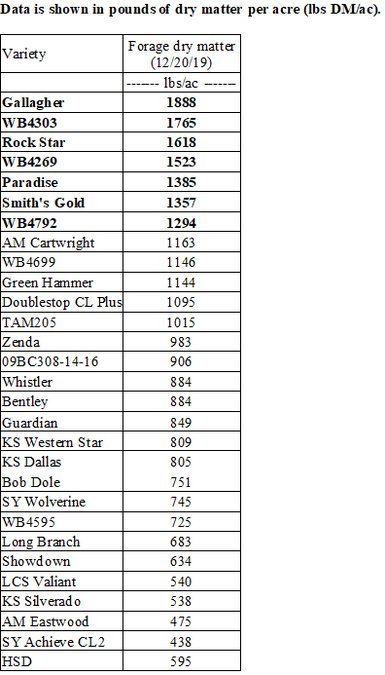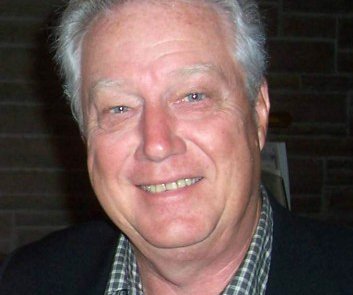Fall forage yield is an important aspect of dual-purpose wheat production. In this system, wheat is typically sown earlier than for grain-only production, at higher seeding rates, and with additional nitrogen fertilizer to maximize forage production.
The weather experienced during the fall is crucial in determining the average level of forage yield, with warm and moist weather typically resulting in greater forage yield than cool and dry weather conditions. Management practices that maximize forage yield include early sowing, higher seeding rates, placement of in-furrow phosphorus fertilizer with the seed, and fall nitrogen fertilization.
While the weather is typically the largest factor in determining fall forage production, followed by management, there are also differences among wheat varieties in forage production potential. Thus, every year the K-State Wheat Production Group compares the forage yield of several commonly grown wheat varieties and upcoming lines. This test is usually performed in the South Central Experimental Field near Hutchinson and the forage sampling occurs sometime during December (Table 1).


There was a significant difference in fall forage yield among the 28 wheat varieties tested in the 2019-2020 experiment (Table 1). Forage yield ranged from 438 to 1,888 pounds of dry matter per acre, with Gallagher, WB4303, Rockstar, WB4269, Paradise, Smith’s Gold, and WB4792 yielding similarly in the top forage group. Likewise, all varieties listed at TAM 205 and below had similar forage yield and did not differ statistically.
While it is common for a large range in forage yields to exist among wheat varieties (for example, in 2018-19 our forage measurements ranged from 1,327 to 2,700 lbs/acre), the large range in forage values experienced in the 2019-20 partially reflect the dry conditions experienced during the fall. Plots were planted on extremely dry soils on Sept. 18, and it was not until the Oct. 1-5 interval that ~0.9 inches of precipitation was received. This resulted in a somewhat uneven stand establishment, which could partially explain these results. Additionally, after Oct. 5, the next rainfall event was not until the Nov. 20-29 interval, when about 0.45 inches were received in total of six smaller events. The dry conditions experienced at planting and during the entire fall, coupled with below-average fall temperatures, did not allow for much forage biomass production and increased the plot-to-plot variability in the measurements.
Another important aspect of dual-purpose wheat production is how long each variety can be grazed in the spring. This is measured as the date for first hollow stem. Wheat varieties can differ by as much as 20-30 days in achieving first hollow stem in the spring. The Wheat Production Group at K-State uses this very same trial to measure first hollow stem during late February and early March, you can keep up with this by subscribing to the KSU Agronomy eUpdate at https://webapp.agron.ksu.edu/agr_social/eu.throck or just type KSU Agronomy eUpdate into your internet browser box.
Stacy Campbell is an Agriculture and Natural Resources agent for Cottonwood Extension District. Email him at scampbel@ksu.edu or call the Hays office, 785-628-9430.








